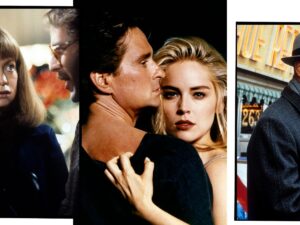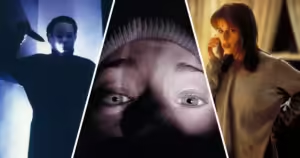
Horror movies have been a staple of cinema since the early days of film. These movies aim to evoke fear, dread, and shock in their audiences, often featuring supernatural elements, psychological thrills, and grotesque imagery. The genre has evolved significantly over the years, reflecting changes in society, technology, and cultural fears. This article delves into the history, key elements, and enduring appeal of horror movies.
Historical Evolution
Early Beginnings (1890s – 1920s): The roots of horror cinema can be traced back to the late 19th and early 20th centuries. Georges Méliès’s 1896 film “Le Manoir du Diable” is often cited as one of the first horror films. The silent era saw classics like “Nosferatu” (1922) and “The Cabinet of Dr. Caligari” (1920), which utilized expressionist sets and lighting to create an eerie atmosphere.
The Golden Age (1930s – 1950s): The 1930s and 1940s are often referred to as the Golden Age of horror, dominated by Universal Studios’ iconic monsters such as Dracula, Frankenstein, and the Mummy. These films established many of the genre’s conventions and were instrumental in defining the visual and thematic language of horror.
The Post-War Era (1950s – 1970s): Post-WWII horror saw a shift towards science fiction with movies like “The Day the Earth Stood Still” (1951) and “Invasion of the Body Snatchers” (1956), reflecting Cold War anxieties. The late 1960s and 1970s introduced a more graphic and psychological approach with films like “Psycho” (1960), “Night of the Living Dead” (1968), and “The Exorcist” (1973).
The Slasher Era (1980s): The 1980s were dominated by the slasher subgenre, characterized by films like “Halloween” (1978), “Friday the 13th” (1980), and “A Nightmare on Elm Street” (1984). These movies often featured masked killers and a high body count, becoming a defining aspect of the decade’s horror landscape.
Modern Horror (1990s – Present): The 1990s saw a self-referential turn with films like “Scream” (1996), which deconstructed genre tropes. In the 2000s and 2010s, horror diversified further with found footage films like “The Blair Witch Project” (1999) and paranormal horrors like “The Conjuring” (2013). The genre also saw a rise in psychological horror and social commentary, exemplified by movies such as “Get Out” (2017) and “Hereditary” (2018).
Key Elements of Horror Films
Atmosphere and Setting: Creating an unsettling atmosphere is crucial in horror films. This can be achieved through eerie locations, such as haunted houses, desolate landscapes, or claustrophobic environments. Lighting, sound design, and music also play essential roles in building tension and fear.
Characters and Archetypes: Horror often features a mix of relatable protagonists and terrifying antagonists. Common character types include the final girl, the mad scientist, the monster, and the skeptic. These archetypes help establish familiarity within the genre while allowing for creative subversion.
Themes and Symbols: Horror films frequently explore themes like mortality, the unknown, and societal fears. Monsters and supernatural elements often symbolize deeper anxieties, such as fear of death, loss of control, or the breakdown of social order. Symbols like mirrors, shadows, and blood are recurrent motifs that enhance the thematic depth.
Shock and Suspense: Effective horror relies on the balance between shock and suspense. Jump scares provide immediate shocks, while suspense builds a lingering sense of dread. Filmmakers use pacing, misdirection, and timing to manipulate audience emotions and create memorable scares.
The Enduring Appeal of Horror
Cathartic Experience: Horror films offer a safe space for audiences to confront and process their fears. The controlled environment of a movie allows viewers to experience terror and relief, providing a cathartic release.
Exploration of Taboo: The genre often delves into taboo subjects, pushing the boundaries of what is socially acceptable. This exploration can provoke thought, challenge norms, and spark important conversations about morality, identity, and human nature.
Community and Shared Experience: Watching horror movies can be a communal activity, whether in a theater or at home. The shared experience of fear can create bonds between viewers, making horror a social as well as an individual experience.
Innovation and Creativity: Horror is a genre that continuously evolves, driven by filmmakers’ creativity and willingness to experiment. From pioneering special effects to exploring new narrative structures, horror often leads the way in cinematic innovation.
Conclusion
Horror movies remain a vital and dynamic part of the film industry, constantly reinventing themselves to reflect and challenge contemporary fears. Whether through classic monsters, psychological thrills, or supernatural terror, the genre’s ability to tap into the primal aspects of human emotion ensures its enduring popularity. As society and technology continue to evolve, horror films will undoubtedly keep pushing boundaries, scaring and delighting audiences for generations to come.





